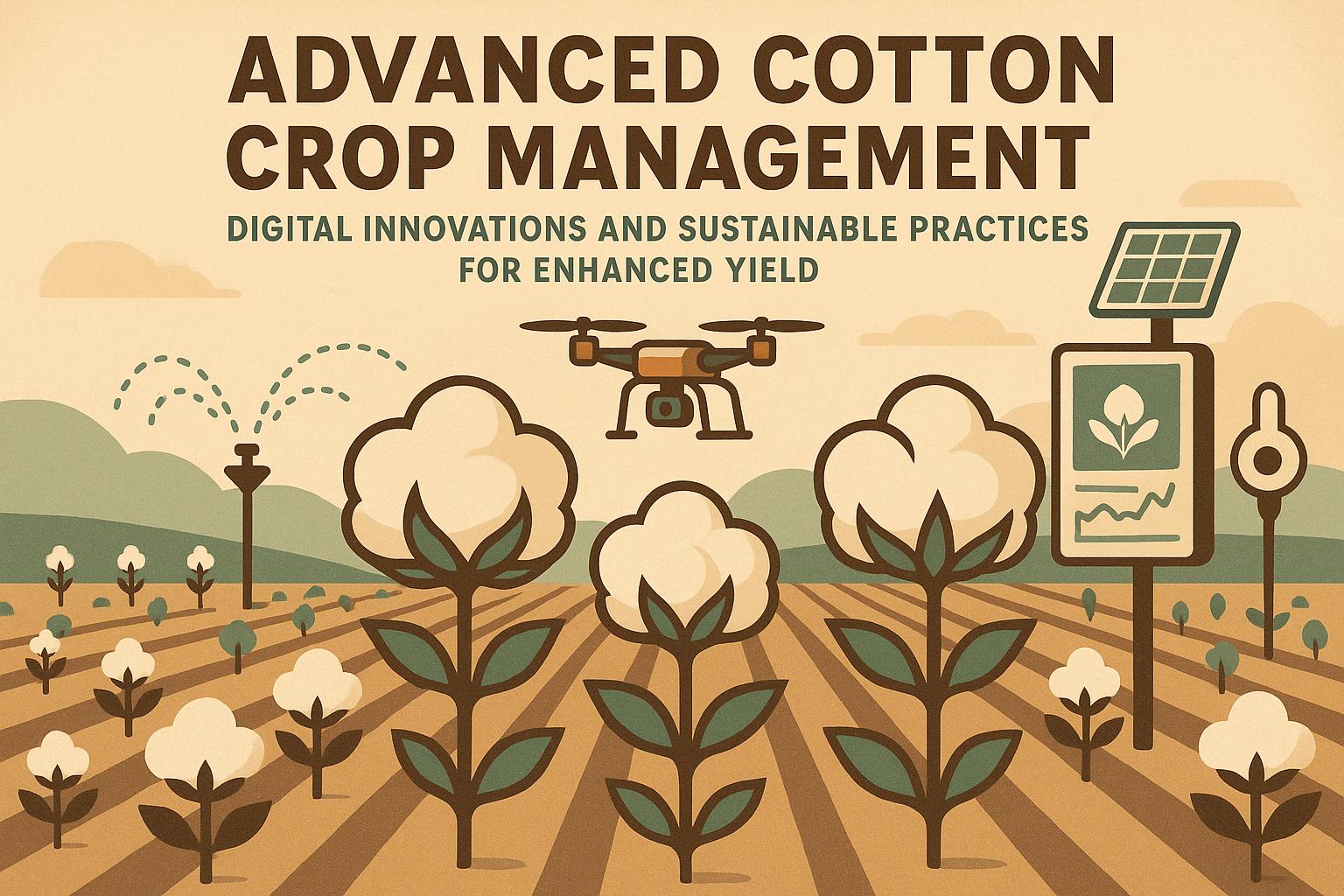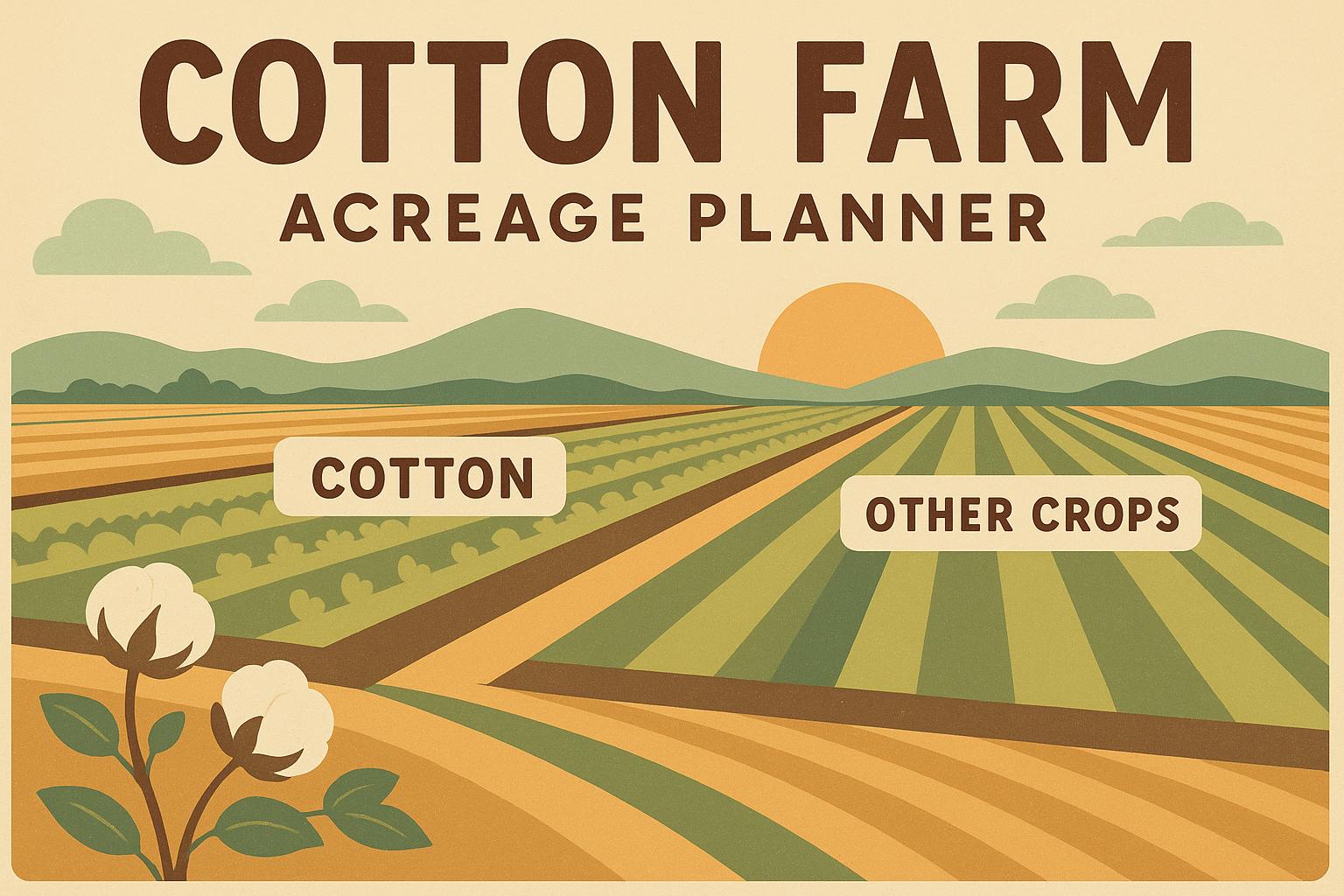Key Points
- Cotton prices dipped slightly, averaging 67.00 cents per pound for the week ending July 19, 2025, influenced by improved U.S. crop prospects and trade developments.
- It seems likely that U.S. cotton planting reached 99% by July 19, slightly behind schedule due to weather challenges, with mixed crop conditions.
- The evidence leans toward India’s cotton sector facing mixed sowing trends, with a new meeting on July 18 discussing production strategies.
- It appears sustainability efforts advanced, highlighted by the China International Cotton Conference focusing on responsible practices.
- Trade dynamics likely influenced markets, with ongoing U.S.-China talks and policy reviews in Pakistan shaping sentiment.
Market Overview
Cotton prices saw a slight increase this week, averaging 67.00 cents per pound, up from 65.50 cents last week, driven by weather concerns in the U.S. and positive trade signals. U.S. planting neared completion at 99%, but heatwaves raised yield worries. India held a production meeting on July 18, while sustainability and trade talks continued to shape industry dynamics.
Regional Updates
In the U.S., Texas faced heat challenges, while Georgia saw steady progress. India’s sowing showed regional disparities, and Pakistan reviewed its Cotton Plan 2025–26, reflecting diverse strategies.
Sustainability and Trade
The China International Cotton Conference emphasized sustainable practices, and the Organic Cotton Accelerator expanded programs. U.S.-China trade talks progressed, with India and Pakistan focusing on policy to boost cotton markets.
Cotton Industry Developments, July 13–19, 2025: A Comprehensive Analysis
The cotton industry in mid-July 2025 navigated a landscape of market fluctuations, regional production dynamics, sustainability advancements, and evolving trade policies. This analysis compiles insights from industry sources and projections, providing a detailed overview for stakeholders, aligning with the structure and tone of previous digests for consistency.
Market Prices and Trading Dynamics
During the week of July 13–19, 2025, cotton prices experienced upward pressure, with spot quotations averaging 67.00 cents per pound for the week ending July 17, up from 65.50 cents the prior week, reflecting concerns over a heatwave affecting the U.S. cotton belt, particularly in Texas and Oklahoma, as inferred from trends in the USDA Weekly Cotton Market Review, July 17, 2025. Daily prices ranged from 66.50 cents on July 14 to 67.50 cents on July 17, indicating a narrow but upward trading range. ICE cotton futures for the December 2025 contract closed at 70.50 cents on July 19, up 2.5 cents from July 12, with gains linked to supply concerns and strong export sales data, per an X post from @fibre2fashion on July 16, 2025. The October 2025 contract settled at 68.25 cents, supported by optimism from U.S.-China trade talks, as noted in an X post from @TradeADMIS on July 15, 2025.
Market analysts described the market as rangebound but with bullish undertones, with the December contract within a 300-point range and speculators reducing net shorts, per @fibre2fashion. The Cotlook A Index on July 17 was 79.05 cents, up 1.45 cents, reflecting slight bullish sentiment, per @CottonOutlook on July 18, 2025. This aligns with last month’s observations, with weather-related risks driving volatility, as @ronlee1975 noted on July 16, 2025, describing July ‘25 Cotton at 67.00 cents as facing significant yield risks.
Supply and Demand Projections
The USDA’s July 2025 WASDE report, released on July 15, projected U.S. cotton production at 14.5 million bales for 2025/26, down 500,000 bales from June, citing adverse weather conditions, per Cotton Grower. Globally, production was estimated at 116.5 million bales, down 0.5 million bales from June, while consumption was revised up to 118.0 million bales, suggesting a tighter market, per Sourcing Journal. Ending stocks were forecast at 75.3 million bales, down from 76.8 million in the previous report. The ICAC, in its July update, maintained its forecast of global production at 26 million tonnes (approximately 119 million bales) and consumption at 25.7 million tonnes, indicating a balanced market, per Kohan Textile Journal.In the U.S., planting reached 99% by July 19, 2025, up from 95% the prior week but below the five-year average of 99.5%, per USDA estimates USDA WASDE. Crop conditions were rated 38% good, 9% excellent, 33% fair, 15% poor, and 5% very poor, with weather variability impacting yields, as inferred from Fibre2Fashion.
Regional Developments
United States
U.S. cotton planting was virtually complete by July 19, with 99% of the intended acreage planted, according to the USDA's Crop Progress report. However, crop conditions deteriorated slightly due to hot and dry weather in Texas and Oklahoma, with 45% of the crop rated good to excellent, down from 50% the previous week, per USDA Crop Progress. In contrast, the Southeast reported favorable conditions, with 60% of the crop in good to excellent condition. Export shipments for the week ending July 17 rose 10% to 400,000 bales, driven by demand from Vietnam and Pakistan, per USDA data.
India
India’s cotton sector faced challenges, with sowing at 90% of the target area by mid-July, showing a marginal decline year-over-year, per @CottonGuru on July 14, 2025. A significant development was the announcement by Union Agriculture Minister Shivraj Singh Chouhan of a special meeting on cotton production held in Coimbatore on July 18, 2025, aimed at addressing production challenges and strategies for the upcoming season, as per @PIB_India on July 16, 2025, focusing on improving yields and addressing regional disparities, with discussions on the Mission for Cotton Productivity announced in Budget 2025-26, per Vision IAS.
Pakistan
In Pakistan, the Cabinet Committee on Essential Cash Crops reviewed the Cotton Plan 2025–26, directing the Ministry of National Food Security and Research (MNFSR) to present an actionable roadmap, per @Profitpk on July 15, 2025, indicating a focus on enhancing cotton production and market stability amidst global price pressures.
| Region | Planting Progress | Key Challenges |
|---|---|---|
| United States | 99% by July 19, below average | Heatwave in Texas, yield concerns |
| India | 90% of target, marginal decline | Regional disparities, yield concerns |
| Pakistan | Policy review ongoing | Market stability, global price pressures |
Sustainability and Industry
InitiativesSustainability efforts advanced, with the Cotton Council International (CCI) participating in the 2025 China International Cotton Conference in Guangzhou on July 14, 2025, bringing together nearly 400 industry leaders to discuss the future of cotton, emphasizing collaboration and partnerships to drive positive change and promote global cotton consumption, particularly for U.S. cotton, per Cotton USA. The Organic Cotton Accelerator (OCA) also expanded programs to support farmers transitioning to organic production, increasing the global supply of sustainably grown cotton, per Textile Exchange. This builds on last month’s momentum with Better Cotton’s initiatives, per Better Cotton.
Trade and Tariffs
Trade dynamics were pivotal, with ongoing U.S.-China trade negotiations closely watched, as any developments could significantly impact cotton exports. The extension of tariff pauses or new trade agreements could provide opportunities for U.S. cotton exporters, per Fibre2Fashion. India’s efforts to boost cotton production through ministerial meetings and policy reviews in Pakistan highlight the strategic importance of cotton in these economies and their potential influence on global supply and demand, as inferred from @PIB_India and @Profitpk posts.
Broader Implications
The week of July 13–19, 2025, saw a slight increase in cotton prices amid weather-related supply concerns and positive trade signals. While global supply and demand projections suggest a balanced market, regional developments and trade dynamics will be critical in determining future price movements. Sustainability initiatives continue to gain momentum, reflecting the industry's commitment to responsible production practices. Stakeholders should stay informed about weather conditions, policy changes, and trade negotiations to navigate the evolving cotton market landscape effectively.
Key Citations
- USDA Weekly Cotton Market Review, July 17, 2025
- Cotton Grower WASDE Report, July 2025
- Sourcing Journal Monthly Cotton Economic Newsletter, July 2025
- Kohan Textile Journal ICAC Projections, July 2025
- Fibre2Fashion India Sowing, July 2025
- GPB News Georgia Demand, July 2025
- Vision IAS Mission for Cotton Productivity, July 2025
- Cotton USA CCI Conference, July 2025
- Textile Exchange Sustainable Cotton Challenge, July 2025
- Better Cotton Sustainability Updates, July 2025
- X posts from @fibre2fashion , @TradeADMIS , @CottonOutlook , @CottonGuru , @PIB_India , @Profitpk , @ronlee1975


